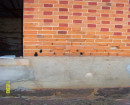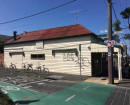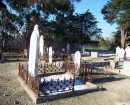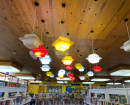SANDRIDGE RAILWAY LINE BRIDGE
OVER YARRA RIVER, MELBOURNE AND SOUTHBANK, MELBOURNE CITY
-
Add to tour
You must log in to do that.
-
Share
-
Shortlist place
You must log in to do that.
- Download report



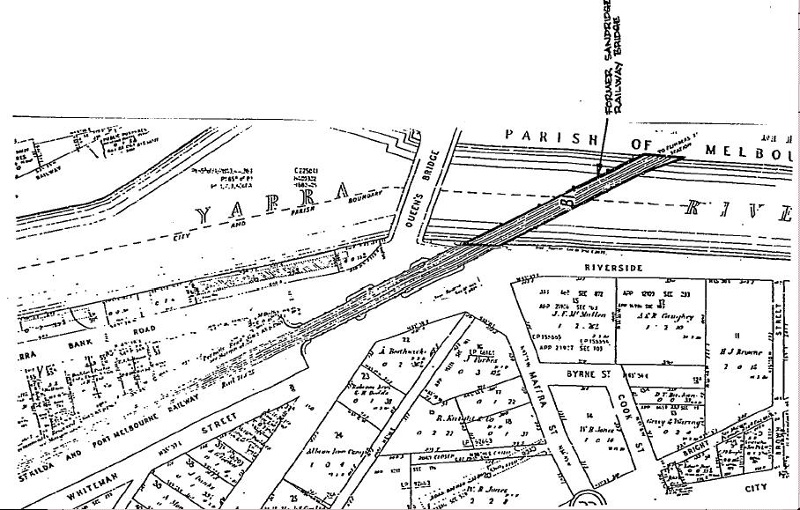
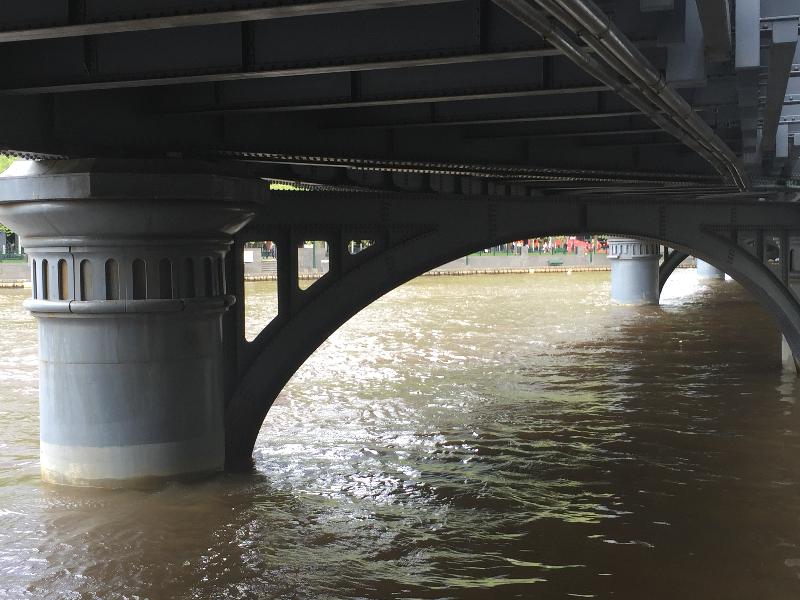

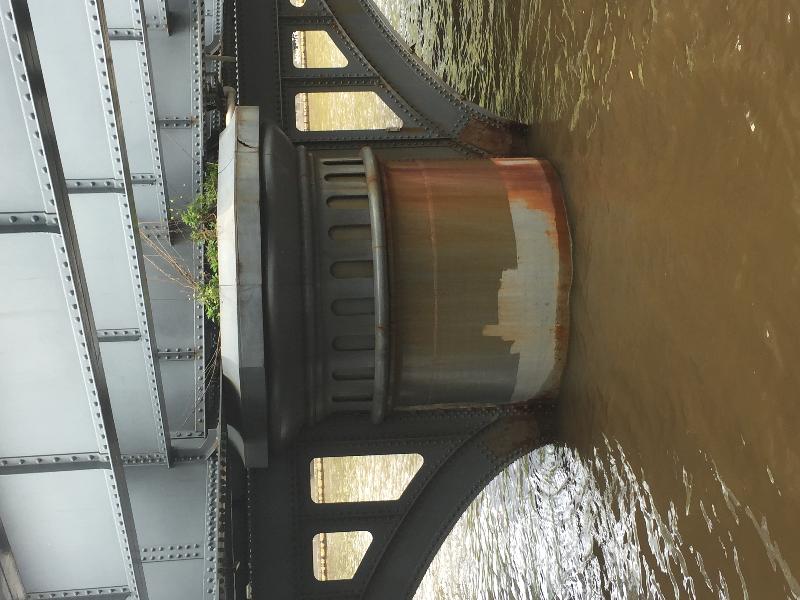

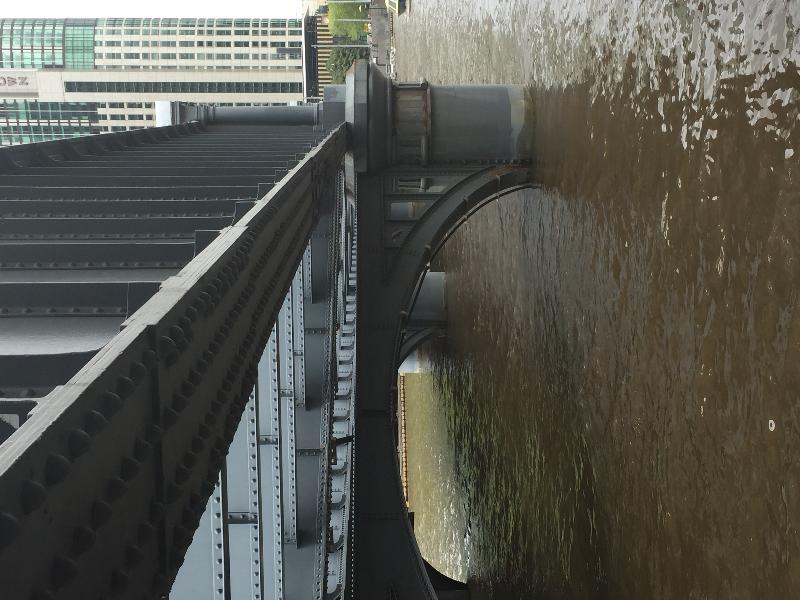
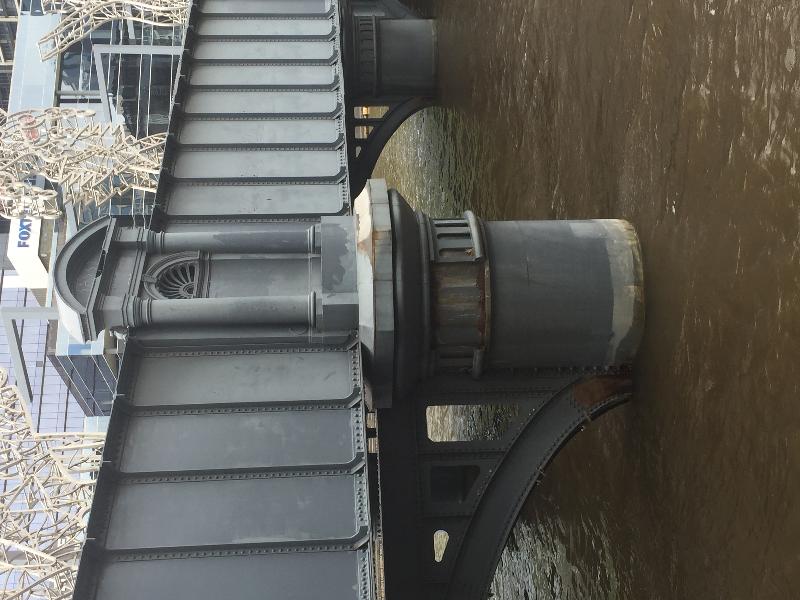
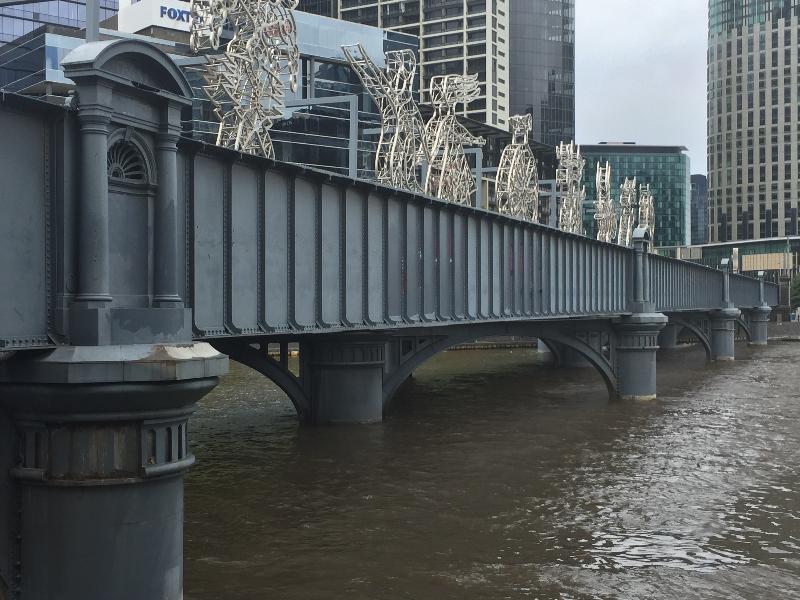
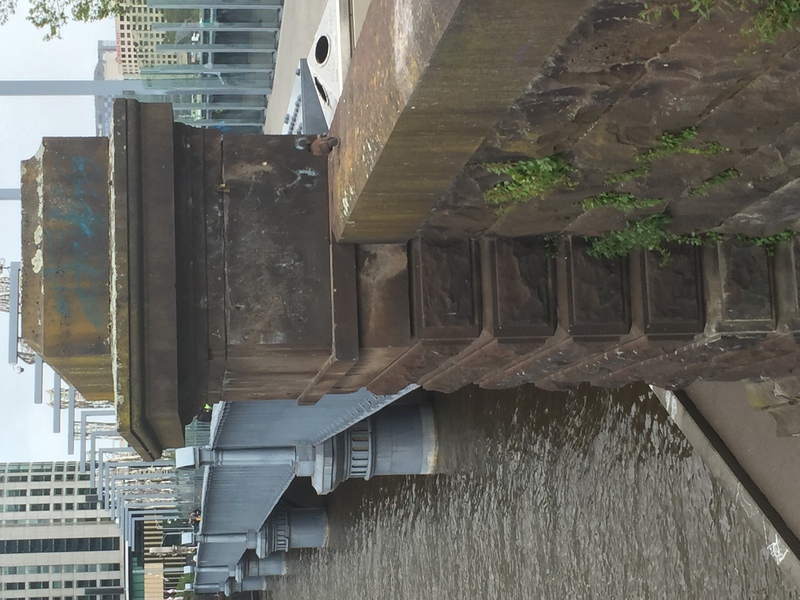
Statement of Significance
What is significant?
The Sandridge Railway Line Bridge was the third successive bridge at this location to carry the rail link from Flinders Street Station to Port Melbourne and St Kilda. The bridge is on the line of the original Hobson's Bay Railway Company line to Sandridge, the first passenger railway line in Australia in 1854. The bridge was designed by the Victorian Railways Department and the contract let to David Munro & Co in 1886. It is a metal girder bridge with five spans totalling 178m and with a maximum span of 36.9m. The four railway lines were opened for railway traffic in 1888. The Sandridge Railway Line Bridge is constructed from steel with hollow iron columns filled with concrete to support the plate girders and cross girders. The columns, set parallel to the stream flow in groups of three, were intended to reduce the impact of flooding. On either side of the river the steel girders are supported by bluestone and brick buttresses. On the south side the structure is continued as a brickwork viaduct. The location of the Flinders Street Station, the widening of the river and the great strength of its all-metal construction resulted in the unusual slanted angle of the bridge across the river, with the tracks at an angle of about 33 degrees to the stream flow. In 1925 overhead electrical masts were added and the original timber deck was replaced with rail and concrete slabs. The bridge is no longer used.
How is it significant?
The Sandridge Railway Line Bridge is of historical, technical and architectural significance to the State of Victoria.
Why is it significant?
The Sandridge Railway Line Bridge is historically significant as a surviving link across the River Yarra of Australia's first passenger railway line. The bridge has a strong historical association with the Port Melbourne and St Kilda railway lines which played a vital role in the development of Melbourne as a great commercial city of the nineteenth century. Each of these two lines was provided with twin tracks, making the bridge the first railway bridge in Victoria with more than two tracks. The bridge played a significant role in linking both port and recreational facilities with the city, facilitating the economic, suburban and demographic development of Melbourne. It is also historically significant as a notable example of the work of engineer, speculator and contractor David Munro, whose other work included Queens Bridge and Princes Bridge.
The Sandridge Railway Line Bridge is technically significant as possibly the earliest example of the use of steel bridge girders on the Victorian railway system. The columns, innovative in construction design, are similar in design to Queens Bridge. The bridge is of considerable size, both in terms of its maximum span and its length. Its maximum span is among the ten longest metal girder bridge spans in Australia. The bridge is also an unusual example of bridge design for its skewed angle over the River Yarra.
The Sandridge Railway Line Bridge is architecturally significant as an essentially intact and rare example of a building type, and as the only known example of a railway bridge in Victoria carrying substantial ornamentation. The bridge demonstrates a notable application of classical decorative schemes in its piers, columns, pediments, fanlight motifs and arched braces across the piers.
-
-
SANDRIDGE RAILWAY LINE BRIDGE - History
History of Place:
By the late 1830s the landing at Sandridge had become a popular alternative to the Williamstown anchorage and a plan was proposed by Robert Hoddle in 1839 to include a railway from Sandridge to the settlement in Melbourne. The scheme did not come to fruition until the Melbourne and Hobson’s Bay Railway Co. was formed and the first passenger railway in Australia was opened in 1854. The important role of the Port Melbourne line for goods traffic began to decline in the 1890s following the opening of the Coode Canal and the Victoria Docks. The decline was offset partly by the increasing popularity of paddle steamers from the railway pier. The railway continued to handle goods until around 1930.
(National Trust, Port Melbourne and St Kilda Railway Lines, 1986)
Contextual History:
David Munro
David Munro, Contractor, (1844 -98) Engineer, speculator, contractor, born in Scotland, came to Victoria in 1854. He worked with his father, John Munro, a blacksmith and contractor, in King Street, Melbourne. Following his father’s insolvency, Munro started his own engineering and machinery supply business.
During the construction and railway boom of the 1870s and 1880s David Munro and Co. was one of the colony’s biggest employers of labour. They built the new Prince’s Bridge in 1890 for 45,000 pounds. Other railway contracts included the Fitzroy-Whittlesea Line for 100 000 pounds and the Frankston-Crib Point Line for 53 000 pounds.
Munro was president of the Chamber of Commerce. He was a brother of James Munro, the notorious land boomer and became involved in land speculation himself through his close links with Thomas Bent. Munro and Bent shared the construction of the Nepean Road tramway and were directors in the Brighton Gas Co. Ltd.
David Munro’s end was a tragic one. By 1889 he was in serious financial difficulties, which involved all members of his family. His losses on contracts amounted to 90 000 pounds. He and his wife moved from their mansion in Kooyong to a small cottage in Parkville where, in March 1898, Munro died of a haemorrhage and alcoholism.
Associated People: David Munro (1844-1898)SANDRIDGE RAILWAY LINE BRIDGE - Permit Exemptions
General Exemptions:General exemptions apply to all places and objects included in the Victorian Heritage Register (VHR). General exemptions have been designed to allow everyday activities, maintenance and changes to your property, which don’t harm its cultural heritage significance, to proceed without the need to obtain approvals under the Heritage Act 2017.Places of worship: In some circumstances, you can alter a place of worship to accommodate religious practices without a permit, but you must notify the Executive Director of Heritage Victoria before you start the works or activities at least 20 business days before the works or activities are to commence.Subdivision/consolidation: Permit exemptions exist for some subdivisions and consolidations. If the subdivision or consolidation is in accordance with a planning permit granted under Part 4 of the Planning and Environment Act 1987 and the application for the planning permit was referred to the Executive Director of Heritage Victoria as a determining referral authority, a permit is not required.Specific exemptions may also apply to your registered place or object. If applicable, these are listed below. Specific exemptions are tailored to the conservation and management needs of an individual registered place or object and set out works and activities that are exempt from the requirements of a permit. Specific exemptions prevail if they conflict with general exemptions. Find out more about heritage permit exemptions here.Specific Exemptions:In accordance with s92(3) of the Heritage Act 2017, permit exemption issued by the Executive Director, Heritage Victoria on 4 January 2023 (P37785):- Installation of temporary events, decorations and structures associated with the City of Melbourne’s municipal Christmas celebrations for up to 60 calendar days (within one calendar year) inclusive of bump in and bump out, with no further structures erected in the same location for a period of 7 calendar days for hard stand surfaces.
- Installation of temporary events and structures for one annual arts festival event of up to up to 45 calendar days (within one calendar year) inclusive of bump in and bump out, with no further structures erected in the same location for a period of 7 calendar days for hard stand surfaces.
- The following temporary event infrastructure can be installed for both events listed above:
- The installation of temporary structures, such as marquees, tents, market stalls, display cases and furniture, gazebos, and shipping containers.
- The installation of temporary freestanding services associated with events, including generators and associated service cabling.
- The installation of temporary freestanding audio-visual and broadcasting equipment, including temporary staging, flooring, rigging, screens, speakers, lighting and associated infrastructure.
- The erection of temporary freestanding scaffolding towers, projectors and infrastructure associated with lightshows and projections onto, or into airspace within the extent of registration of registered places and objects.
- The installation of temporary freestanding artworks.
- The installation of freestanding temporary recreation and entertainment facilities, equipment and structures, such as jumping castles, amusement rides, and sporting equipment.
- The installation of temporary decorations, such as decorative lights, bunting, tinsel, cut floral arrangements, freestanding garden beds and the like.
- The installation of equipment and infrastructure associated with firework, laser and drone displays.
- The parking, installation and operation of temporary micro-tenancies, such as food trucks and coffee carts.
- The installation of temporary furniture, including tables, desks, chairs, umbrellas and the like.
- Installation of temporary portable toilets.
- Installation of temporary operational, promotional, directional and wayfinding signage.
- Installation of temporary surveillance systems.
- The erection of freestanding fencing structures associated with temporary events.
- The following exemption conditions apply to this event:
- Works and activities must be entirely reversible, and not involve damage to, or removal or disturbance of, early or original fabric , including landscape features such as historical planting schemes, paths and ground-surface masonry, built structures (including interiors and exterior elements), or historical archaeological remains.
- Temporary structures and associated elements exempted must be freestanding and not involve new penetrations into or affixings to early or original fabric.
- There must be no subfloor/subsurface/excavation works or activities.
- Cabling and associated service conduits must not be affixed to early or original fabric.
- Outdoor temporary structures must not be positioned within a structural root zone, or within two metres of garden beds.
- Works or activities within tree protection zones must be in accordance with a Tree Protection Management Plan prepared by a qualified arborist.
- Outdoor temporary structures are exempt within tree protection zones only if works and activities are undertaken in accordance with a Tree Protection Management Plan prepared by a qualified arborist.
- In tree protection zones the method of affixing temporary outdoor structures to the ground must be in accordance with advice provided by a Tree Protection Management Plan prepared by a qualified arborist.
- Any works or activities involving the attachment of temporary decorations, artworks or lights to trees must be guided by a Tree Protection Management Plan prepared by a qualified arborist.
- Plant and equipment access must use existing paths and access routes where possible. Existing paths and access routes must not be damaged, widened or extended.
- Tree canopy and fragile surfaces such as turf, soft landscaping, timber flooring and groundsurface masonry (excluding concrete or asphalt), must be protected from temporary structures and associated installation activities (for example the use of sleepers, boards, track matting or other ground protection). Vehicles must not use access routes through floorboarded, decked or tiled locations.
- All works and activities must comply with the internal and external engineering and loading requirements of the place.
- Any area(s) impacted by works and activities must be fully remediated to its previous condition within 28 calendar days of removal of temporary structures.
- General Exemptions related to temporary events and structures apply in addition to this specific exemption.
-
-
-
-
-
MITRE TAVERN
 Victorian Heritage Register H0464
Victorian Heritage Register H0464 -
MELBOURNE SAVAGE CLUB
 Victorian Heritage Register H0025
Victorian Heritage Register H0025 -
GENERAL POST OFFICE
 Victorian Heritage Register H0903
Victorian Heritage Register H0903
-
'Lawn House' (Former)
 Hobsons Bay City
Hobsons Bay City -
1 Fairchild Street
 Yarra City
Yarra City -
10 Richardson Street
 Yarra City
Yarra City
-
-






